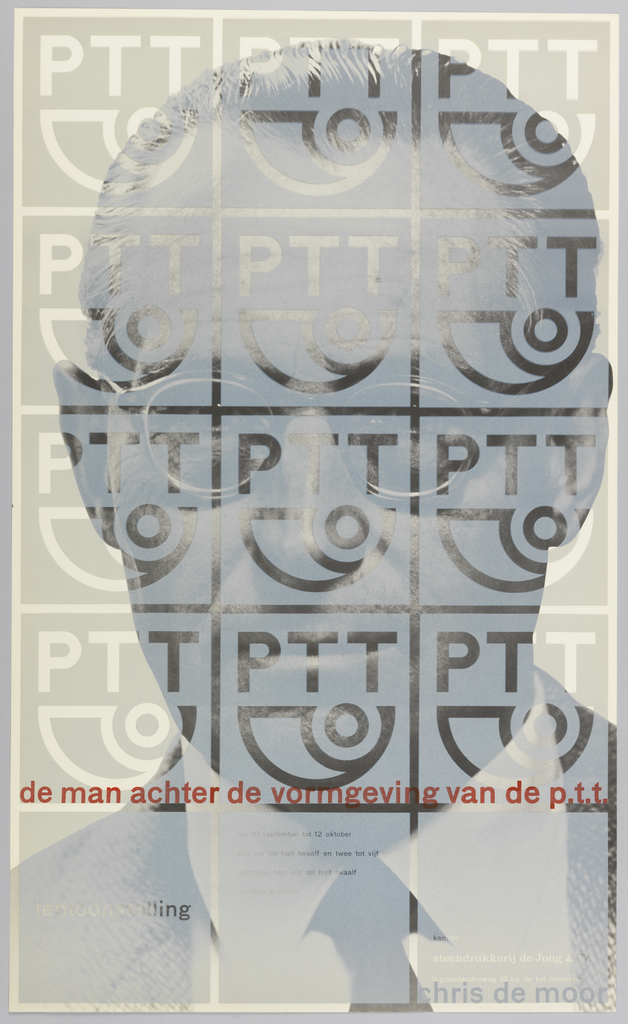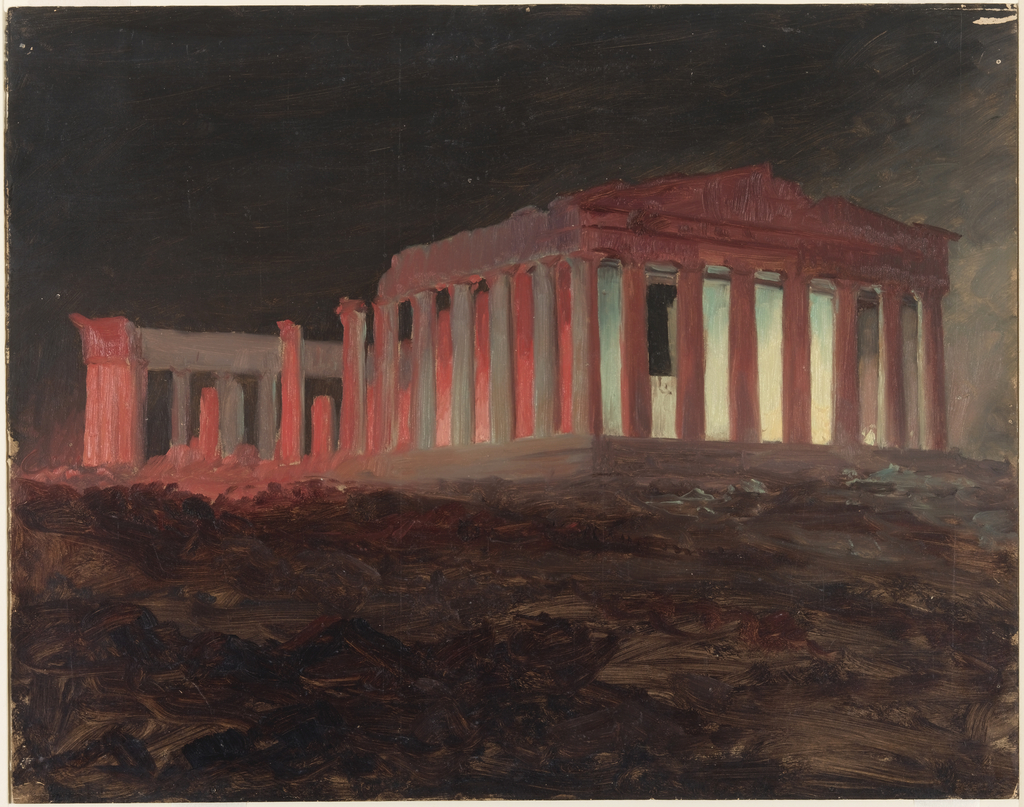Mixing classical themes with whimsy, the Panel of Arabesques for the Hôtel de Salm is a vibrant example of Neo-classical taste. The design, colored a bright turquoise, decoratively illustrates motifs of satyrs and flower nymphs participating in a religious sacrifice. Bright color palettes were exceedingly popular during the period but were later covered up with...
There is—literally—a man behind the design of the post office in Pieter Brattinga’s (1931-2004) De Man Achter de Vormgeving van de P.T.T. This poster is for a 1960 exhibition by the Dutch postal service, the PTT (then the Staatsbedrijf der Posterijen, Telegrafie en Telefonie; now the Koninklijke PTT Nederland). The PTT, founded in the nineteenth...
Home of the mythological goddess Athena, the Parthenon is a hauntingly sacred place where the air is ominously rife with magic. Or, at least, that is the mood evoked in Frederic Edwin Church’s (1826-1900) oil sketch of the Parthenon. To create this effect, Church chose to paint the building from below, giving the impression that...


